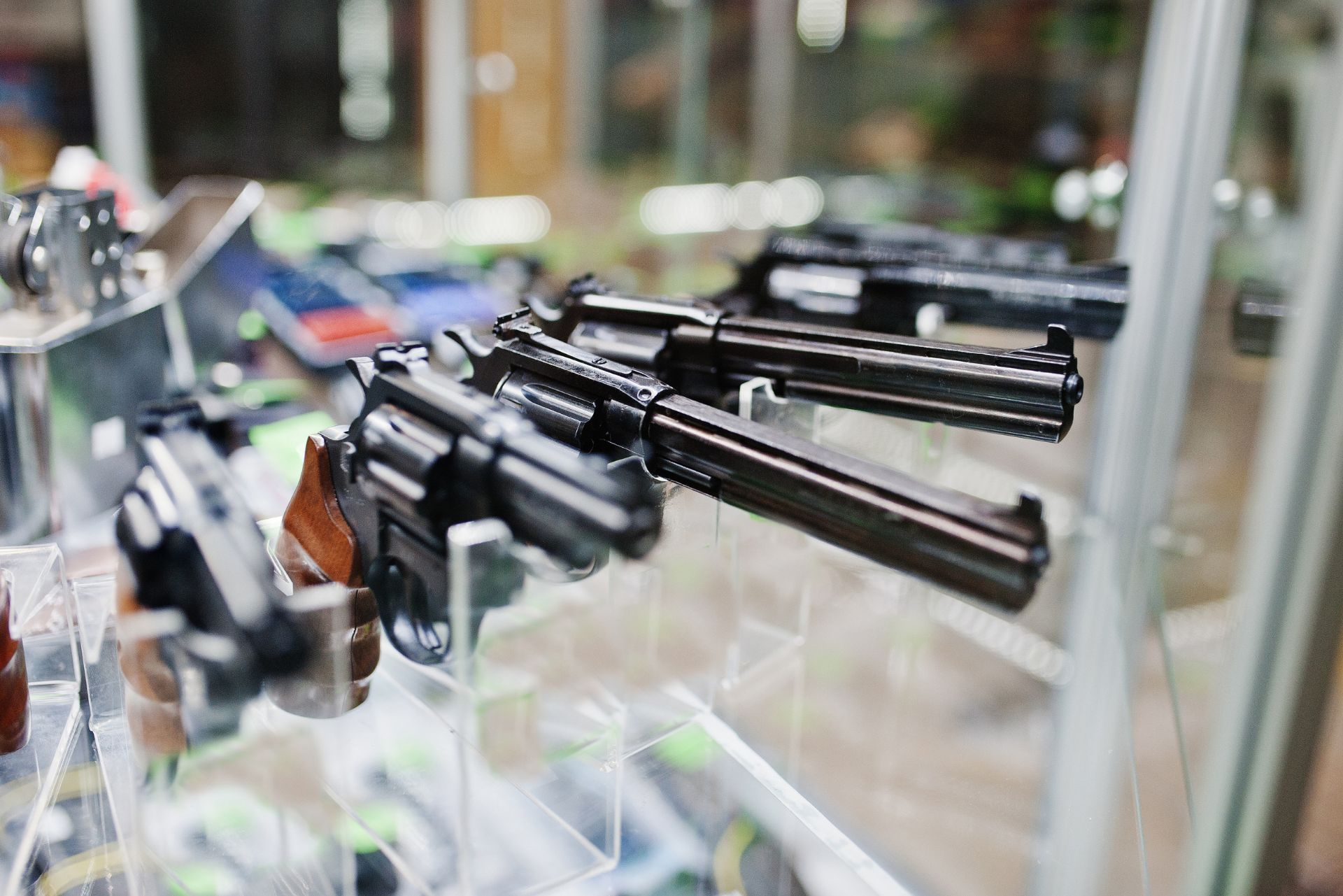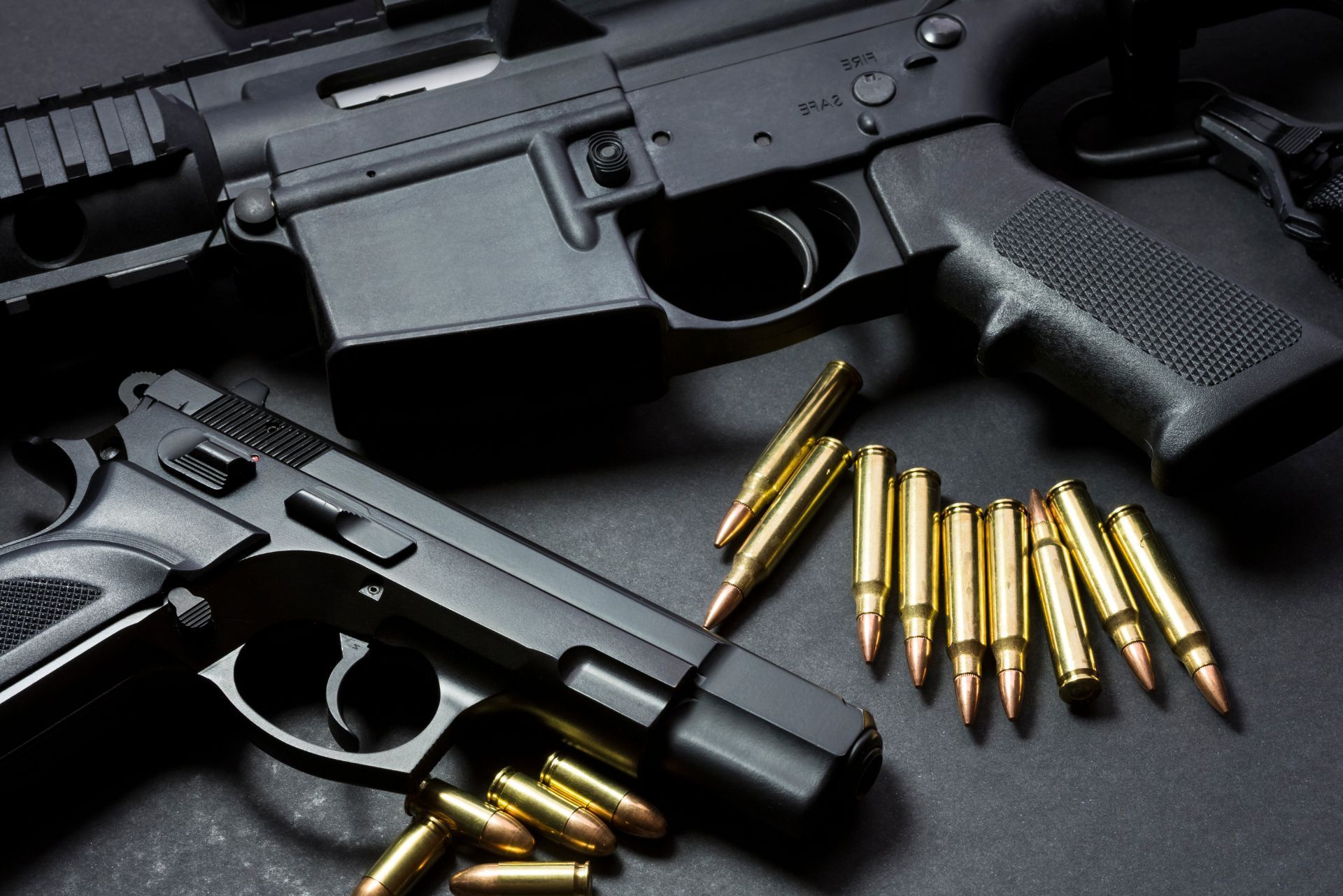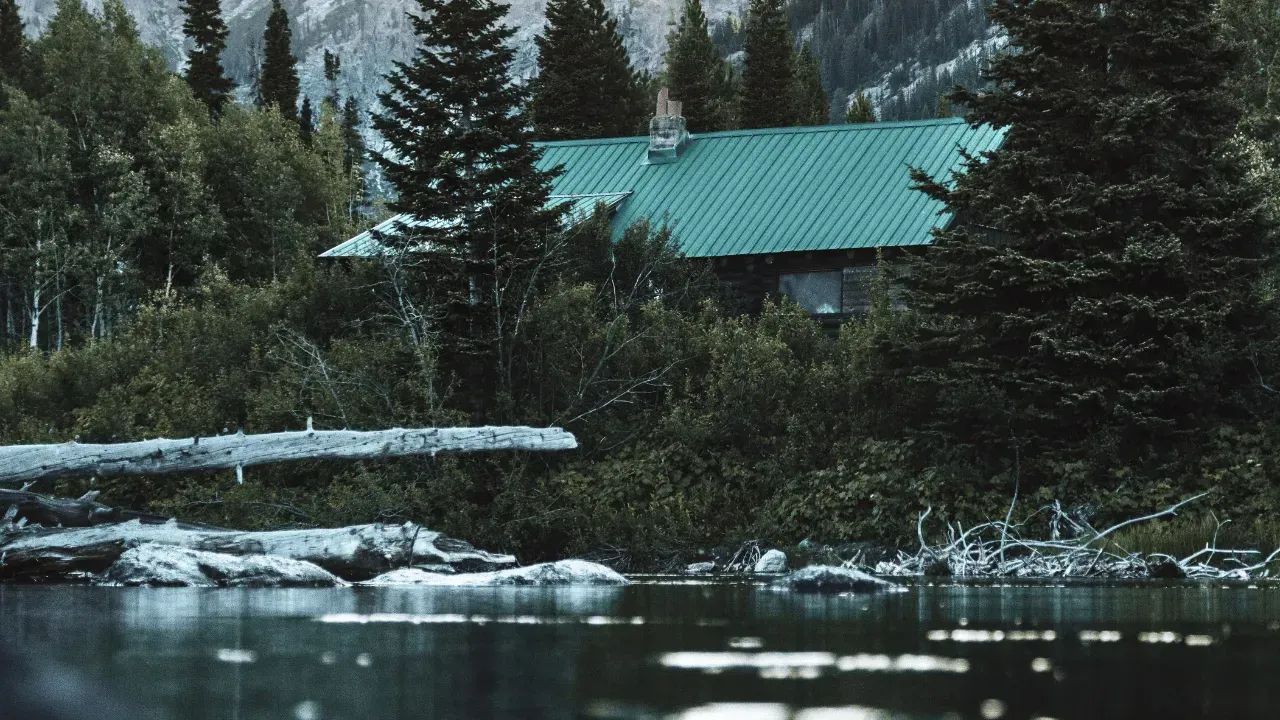Colorado Firearms Dealer & Gun Range Insurance

8:30am - 5:00pm Mon-Fri
We'll Reply in 15min*
Index
The Unique Risk Landscape for Colorado Firearms Businesses
Legal and Regulatory Framework Affecting Insurance Needs
Core Insurance Policies Every Colorado Firearms Dealer Should Consider
Specialized Coverage for Gun Ranges
Cost Factors and Premium Benchmarks
Claims Scenarios: Lessons From the Field
Choosing the Right Insurance Partner
Proactive Risk-Management Strategies to Lower Premiums
Contact Us
Phone
303-421-5123
Location
9035 Wadsworth Parkway
Suite 2730B
Westminster, CO 80021
Colorado’s booming outdoor recreation economy and robust Second Amendment culture have fostered an impressive ecosystem of federally licensed firearms dealers (FFLs), indoor tactical training centers, and picturesque high-country ranges. While the Centennial State ranks only twenty-first nationwide in population, the Bureau of Alcohol, Tobacco, Firearms and Explosives (ATF) lists more than 1,700 active FFLs within its borders—roughly one for every 3,300 residents. From mom-and-pop pawnshops along the Front Range to sprawling destination ranges on the Western Slope, each enterprise faces a unique constellation of liability, property, and regulatory exposures that are simply not addressed by a standard businessowners policy.
A negligent-discharge injury, an unexpected wildfire, or even a missing serial number in the bound book can trigger claims and penalties large enough to force permanent closure. Selecting the right insurance program can be the difference between a manageable setback and a catastrophic loss. The guide below distills current industry data, Colorado-specific statutes, and real-world claim examples to help owners, managers, and aspiring entrepreneurs build an informed risk-management strategy—from the first lease negotiation to the day-to-day operation of a high-volume range.
The Unique Risk Landscape for Colorado Firearms Businesses
Firearms dealers anywhere in the United States share certain baseline exposures—burglary, accidental discharge, product defect claims, and general slip-and-fall hazards. Yet Colorado’s geography, demographics, and legal environment add layers of complexity. Elevation can drive heavier snowfall that collapses range roofs, while short-notice lightning storms wreak havoc on outdoor electronics and target-retrieval systems. Urban areas such as Denver, Colorado Springs, and Aurora report property-crime rates roughly 20 percent above the national average, increasing the probability of smash-and-grab thefts that place stolen firearms directly into criminal circulation. Insurers carefully track those regional statistics, and only a handful of carriers are comfortable underwriting retailers that keep inventory on the premises overnight.
Wildfire is another distinct Colorado peril. According to the Colorado State Forest Service, ten of the state’s twenty-largest wildfires on record have occurred in the past decade, burning more than one million acres. A range or storefront located in the wild-land–urban interface faces higher premiums, stricter defensible-space requirements, and sometimes mandatory sprinkler retrofits. Underwriters also factor in recreational marijuana laws, which heighten cash-on-hand robbery exposure, and a famously mobile population that enjoys backcountry excursions but creates shipping and transfer challenges for dealers who support seasonal customers. Taken together, these elements underscore why a customized insurance portfolio is essential rather than optional.
Moreover, the regulatory landscape in Colorado is particularly intricate, with state laws governing everything from background checks to magazine capacity. Firearms businesses must navigate a patchwork of local ordinances that can vary significantly from one municipality to another. For instance, some cities have enacted stricter regulations on the sale of certain types of firearms or ammunition, which can directly impact inventory management and sales strategies. This legal complexity necessitates not only a robust understanding of compliance but also an agile business model that can adapt to changing laws, making it imperative for firearms dealers to stay informed and proactive.
Additionally, the community dynamics in Colorado can influence the risk landscape. With a strong culture of outdoor sports and hunting, firearms businesses often engage with a diverse customer base that includes both enthusiasts and casual users. This demographic variance can lead to unique liability exposures, particularly in training and education settings where safety protocols must be meticulously followed. Furthermore, the rise of social media and online sales channels has introduced new risks related to marketing and customer engagement, as businesses must navigate the fine line between promoting responsible firearm ownership and adhering to advertising regulations. As a result, firearms dealers in Colorado must not only focus on traditional risk management but also embrace innovative strategies to mitigate these evolving challenges.

Legal and Regulatory Framework Affecting Insurance Needs
Beyond natural hazards and crime statistics, Colorado firearms businesses navigate an intricate web of federal, state, and local rules. Each layer influences insurance requirements—either explicitly, by mandating coverage limits, or implicitly, by changing the underlying legal liability after an incident.
Colorado Civil Liability Landscape
Colorado Revised Statutes §13-21-504 offers limited immunity to shooting ranges from noise-related nuisance claims, yet premises liability under §13-21-115 remains stringent. Plaintiffs need to prove only that the business failed to use “reasonable care” in protecting invitees, a standard courts commonly interpret in favor of injured patrons. Jury-verdict data from the Denver District Court show average bodily-injury awards climbing 9 percent annually since 2018. Consequently, insurers push for higher commercial general liability (CGL) limits—often $2 million per occurrence and $4 million aggregate—well above the $1 million levels that satisfied most landlords a decade ago. Moreover, the increasing trend of litigation in the state has led to a growing number of businesses seeking additional coverage options, such as umbrella policies, which provide an extra layer of protection beyond standard liability limits. This trend reflects a broader awareness among business owners of the potential financial repercussions of lawsuits, prompting many to reassess their risk management strategies.
Federal Oversight and ATF Enforcement
At the federal level, ATF inspections determine whether an FFL keeps or loses its license. In fiscal year 2023, the ATF recommended revocation in 6.3 percent of Colorado inspections, nearly double the national average. Record-keeping violations, missing Form 4473s, and failure to report multiple-handgun sales are common triggers. While insurance cannot prevent punitive action, certain specialty policies reimburse legal expenses incurred during an administrative appeal and cover civil fines up to a stated sublimit. Lenders frequently require that endorsement before extending inventory credit, recognizing that a revoked license renders collateral firearms unsalable. Furthermore, the ATF's focus on compliance has prompted many firearms businesses to invest in comprehensive training programs for their staff, ensuring that everyone involved in the sales process is well-versed in federal regulations. This proactive approach not only helps in maintaining compliance but also serves as a valuable marketing point, as consumers increasingly prefer to engage with businesses that demonstrate a commitment to responsible practices and regulatory adherence.
Core Insurance Policies Every Colorado Firearms Dealer Should Consider
The backbone of any firearms dealer’s risk-transfer strategy is a well-structured package policy. While terminology varies by carrier, most programs bundle property, CGL, and crime coverage, then allow optional add-ons. The goal is seamless protection that eliminates gray areas between forms—particularly important when the same event (for example, an after-hours burglary that leads to stolen handguns later used in a shooting) could trigger several coverage parts.
Property insurance for a firearms retailer runs the gamut from building coverage—if the premises are owned—to tenant improvements, inventory, business-personal property, and business-income protection. Because firearms often appreciate rather than depreciate, replacement-cost valuation with an agreed value endorsement is strongly advised. Carriers also scrutinize alarm systems; those with UL-certified central-station monitoring and redundant cellular back-up usually secure rate credits of 10 to 20 percent.
Dealers must also weigh the merits of product liability, completed-operations coverage, and umbrella limits. Even if a manufacturer is primarily responsible for a defective firearm, plaintiffs’ attorneys typically name every entity in the distribution chain. A $5 million umbrella is now considered prudent for retailers selling modern sporting rifles or custom-built AR-10s, while shops specializing in collectible lever-actions might find a $2 million excess layer adequate. Tailoring the tower to inventory mix ensures premiums track genuine exposure instead of arbitrary benchmarks.
Specialized Coverage for Gun Ranges
Shooting ranges—especially those open to the public—should think of themselves less like retail spaces and more like recreational facilities that happen to sell ammunition. Besides the baseline CGL and property coverage, ranges require accidental-injury protection for rental customers, pollution coverage for lead reclamation, and in some cases, professional liability for instructors. Lead is an especially acute concern: the Colorado Department of Public Health and Environment enforces strict disposal rules, and carriers sometimes exclude claims stemming from improper ventilation or soil contamination unless a separate environmental liability policy is in place.
Range-specific underwriters evaluate bullet-trap design, backstop composition, air-handling systems, and membership vetting procedures. For outdoor facilities, ricochet containment and shot-fall zones come under scrutiny, along with firebreak maintenance in wooded surroundings. Successful operators often demonstrate best-in-class protocols—such as quarterly indoor lead-dust sampling and documented range-safety officer rotations—to secure favorable rates. As a guideline, indoor ranges in Colorado’s urban corridor now pay between $8 and $14 per $1,000 of gross receipts for liability coverage, while rural outdoor ranges trend 25 percent lower.

Cost Factors and Premium Benchmarks
No two policies price exactly alike, yet several variables exert outsized influence on premiums statewide. Location remains paramount: a storefront in downtown Denver can expect property rates two to three times higher than a comparable space in Fort Morgan, primarily due to fire-department ISO ratings and crime scores. Construction type matters as well; insurers discount noncombustible or fully sprinklered buildings up to 15 percent. Inventory turnover is another lever: a high-volume retailer that maintains slim on-hand stock often pays less than a low-volume shop that hoards rare firearms in-store for months.
Claims history follows closely behind. A single open bodily-injury claim valued above $50,000 can drive a 25 percent surcharge for three policy years. Conversely, a clean loss run invites competition among carriers. Finally, participation in industry associations such as the National Shooting Sports Foundation (NSSF) or the Colorado Firearms Association can unlock affinity discounts of 5 to 10 percent, on top of the expertise those organizations provide in loss control and compliance training.
Claims Scenarios: Lessons From the Field
Real-world claim data illustrate how diverse losses can be—and how proper coverage turns a potential catastrophe into a survivable event. Consider a northern Colorado retailer who discovered 27 handguns missing after weekend break-in. Video evidence showed thieves cut power before pulling the door frame with a truck. Property coverage reimbursed $28,000 in inventory and $12,000 in structural repairs, while crime coverage picked up another $4,000 for cash stolen from a register. Without the agreed-value endorsement on inventory, the insured would have received depreciated payouts well below replacement cost.
Another incident involved an indoor range in Pueblo where a guest sustained a lacerated cornea after a hot brass casing ricocheted off a partition. The injured party alleged negligence, citing inadequate lane dividers and insufficient eye-protection signage. The CGL carrier ultimately settled for $96,500, including medical bills and attorney fees. A parallel professional-liability claim targeted the instructor overseeing the lane, but the range’s combined professional–general liability form prevented finger-pointing between carriers and accelerated resolution.
Environmental claims can be equally costly. In 2022, an outdoor sporting-clays course west of Boulder faced a $280,000 cleanup order after elevated lead levels were detected in an adjacent stream. The owner had purchased a $1 million pollution-legal-liability (PLL) policy with a $25,000 deductible. After legal defense and remediation expenses, the carrier paid $233,000. The business temporarily closed but reopened within six months, underscoring the value of specialized coverage that many competitors still forgo.
Choosing the Right Insurance Partner
The firearms industry remains a niche specialty, and only a handful of insurers maintain active programs in Colorado. Rather than approach multiple agents piecemeal—risking submission fatigue and inconsistent data—experts recommend working with a broker who places a minimum of 50 firearms accounts annually. Volume secures negotiating leverage and fosters relationships with underwriters who understand the difference between an armorer’s liability exposure and that of a Type 07 manufacturer engaged in serial production.
Due diligence should extend to carrier financial strength (seeking at least an A- rating from AM Best), claims-handling reputation, and willingness to provide risk-control resources. Some leading insurers offer complimentary on-site assessments, thermal-imaging roof scans, or discounted OSHA and EPA compliance audits. Those value-adds not only improve safety but can yield tangible premium credits, effectively lowering the total cost of risk beyond the written policy price.
Proactive Risk-Management Strategies to Lower Premiums
Insurance should be the backstop, not the first line of defense. Implementing robust preventive measures often trims premiums while safeguarding staff and customers. For retailers, strategies include installing motion-detector-activated exterior lighting, reinforcing door jambs with 14-gauge steel, and securing firearms in a TL-30-rated safe outside business hours. Cloud-based point-of-sale systems that reconcile inventory in real time help detect internal shrinkage before it escalates into large claims.
Ranges can benefit from continuous-air-quality monitoring with automated alerts when lead or carbon monoxide thresholds approach OSHA limits. Mandating double-layer ballistic glass between spectator areas and firing lines reduces third-party injury exposure, while routine lead reclamation every 80,000 rounds fired minimizes environmental liabilities. Training remains paramount: insurers note that ranges employing National Range Officer Institute-certified personnel report 40 percent fewer injury claims than those without formal certification programs.
Frequently Asked Questions
Do Colorado landlords typically require proof of firearms-specific insurance before signing a lease? Yes. Commercial property managers often demand a certificate showing minimum CGL limits of $2 million per occurrence plus evidence of coverage for firearms sales and range operations. Some request that the landlord be named as additional insured and loss payee to cover damage arising from negligent discharge or fire.
Is workers’ compensation more expensive for firearms businesses? In most cases, rates align with other retail or recreational classes, but premium spikes can occur if employees handle explosives, perform gunsmithing that involves welding, or clean lead-contaminated ventilation hoods. Proper job-code classification and documented safety training can mitigate surcharges.
Can I rely on my homeowner’s or personal liability insurance if I run a small FFL out of my house? Almost certainly not. Personal lines policies exclude commercial activities and firearms manufacturing. Operating without a dedicated commercial policy risks not only uncovered claims but also violations of ATF premises requirements, potentially jeopardizing your license.
Conclusion
Colorado firearms dealers and gun-range operators shoulder responsibilities that extend far beyond ringing up a sale or renting a lane. Natural perils, dynamic legal standards, and the social implications of firearms ownership converge to create a high-stakes operating environment. A carefully crafted insurance program—backed by disciplined risk management—provides the best safeguard against financial, legal, and reputational harm. By understanding the unique exposures outlined here and partnering with experienced brokers and carriers, Colorado firearms businesses can continue to serve enthusiasts and professionals alike with confidence, resilience, and an unwavering commitment to safety.




